Lighting can break or make any space, especially when it comes to showcasing your art. A well-curated gallery wall deserves more than just a casual glance; it needs illumination that enhances its beauty and draws in visitors. Whether you’re an artist displaying your own work or a passionate collector, understanding how to use lighting effectively can transform your collection from ordinary to extraordinary. Let’s explore insightful tips that will help you elevate your gallery wall and create an inviting ambiance for all who enter. Get ready to shine a light on creativity. You can read more on Wall ideas for your future art gallery to discover additional ways to enhance your display.
Layer Lighting for Depth
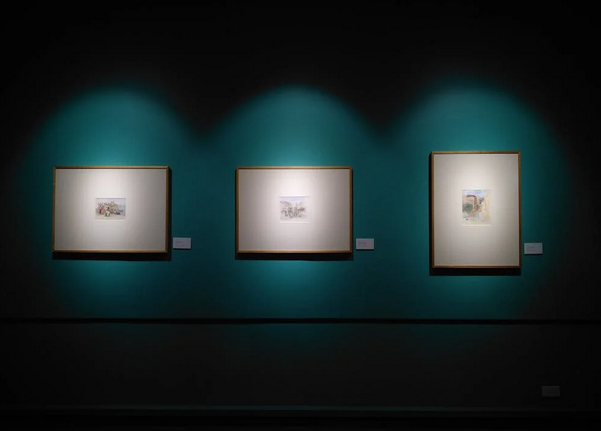
Layered lighting is the secret sauce for adding depth to your gallery wall. By combining different types of light sources, you can create a richer visual experience. Start with ambient lighting as your foundation. This provides overall illumination and sets the mood in the room. Think ceiling fixtures or recessed lights that softly brighten the space without overpowering it. Next, introduce accent lighting to highlight specific pieces of art. Wall sconces or adjustable lamps can spotlight individual works, drawing attention where it’s needed most. Consider task lighting if you read labels or enjoy close-up views of smaller pieces. A well-placed floor lamp or clip-on light can enhance engagement with your collection. This combination allows shadows and highlights to dance across surfaces, transforming flat displays into dynamic showcases that invite exploration and appreciation.
Use Adjustable Picture Lights
Adjustable picture lights are a game changer for any gallery wall. They allow you to direct light precisely where it’s needed, enhancing the visual appeal of your art. These lights come in various styles and finishes, making them versatile additions to your decor. You can select from modern sleek designs or classic vintage looks that complement your artwork. Positioning these lights at different angles creates dynamic shadows and highlights. This adds depth, highlighting colors and textures that may go unnoticed. Installation is often straightforward. Many adjustable options can be mounted directly above or beside each piece for optimal effect. Experiment with their positioning until you find what works best for each piece of art. The right lighting will transform how viewers experience your collection, making every visit memorable.
Opt for LED Track or Spotlights

When illuminating your gallery wall, LED track lights and spotlights are a game changer. They provide focused lighting that can beautifully highlight specific artworks. Track lighting’s versatility allows you to adjust the direction of each fixture, allowing you to create dynamic effects by emphasizing different pieces at various angles. Spotlights offer similar benefits but with an even more concentrated beam, perfect for making a statement piece stand out. LEDs are energy-efficient too, meaning they’ll brighten your art without significantly impacting your electricity bill. Plus, they come in various designs that can complement any decor style.
Consider Smart Lighting for Flexibility
Embracing bright lighting can transform your gallery wall experience. With a tap on your smartphone, you can create the perfect ambiance for showcasing art. Imagine adjusting brightness or color from wherever you are in the room. This flexibility allows you to highlight different pieces depending on the time of day or mood. Want softer lighting for a cozy evening? Done. Need bright whites for an afternoon gathering? Easy. Many smart systems even offer scheduling features. Set up routines that change the lighting throughout the day, enhancing how each artwork is perceived as natural light shifts. Additionally, voice control options make it effortless to manage without moving around too much—ideal when you’re hosting friends and want to impress them with your artistic flair.
Choose the Right Color Temperature
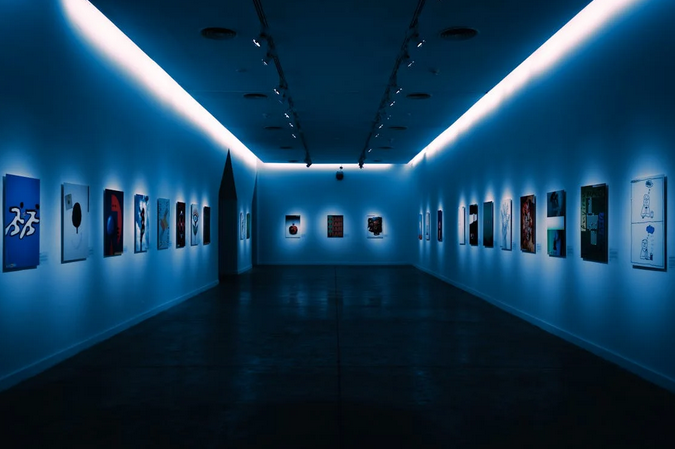
Choosing a suitable color temperature for your lighting can dramatically impact how artwork is perceived. Warmer tones, around 2700K to 3000K, create a cozy atmosphere and enhance earthy painting hues. This warmth draws viewers closer, inviting them …

















 Local roofing contractors possess a deep understanding of the specific weather conditions your region experiences. From scorching summers to freezing winters, these professionals are well-versed in the challenges your roof faces throughout the year. This expertise enables them to tailor their inspection approach, ensuring that potential issues are identified and addressed in line with the unique demands of your local climate.
Local roofing contractors possess a deep understanding of the specific weather conditions your region experiences. From scorching summers to freezing winters, these professionals are well-versed in the challenges your roof faces throughout the year. This expertise enables them to tailor their inspection approach, ensuring that potential issues are identified and addressed in line with the unique demands of your local climate. Regular roof inspections by a local contractor are an investment in cost-effective home maintenance. Identifying and addressing issues in their early stages can prevent them from escalating into major problems that require expensive repairs. By opting for proactive maintenance, you not only extend the lifespan of your roof but also save money in the long run. Local roofing contractors understand the local market, allowing them to source materials economically and provide budget-friendly solutions tailored to your needs.
Regular roof inspections by a local contractor are an investment in cost-effective home maintenance. Identifying and addressing issues in their early stages can prevent them from escalating into major problems that require expensive repairs. By opting for proactive maintenance, you not only extend the lifespan of your roof but also save money in the long run. Local roofing contractors understand the local market, allowing them to source materials economically and provide budget-friendly solutions tailored to your needs.

 But why should we maintain its chemical levels? This not only helps to keep your tiles looking pristine but also promotes a healthy swimming environment for you and your family. Moreover, maintaining balanced chemical levels involves regular testing and adjusting the pH, alkalinity, and sanitizer levels in your pool.
But why should we maintain its chemical levels? This not only helps to keep your tiles looking pristine but also promotes a healthy swimming environment for you and your family. Moreover, maintaining balanced chemical levels involves regular testing and adjusting the pH, alkalinity, and sanitizer levels in your pool.






 One of the most important parts of prepping your home for movers is ensuring you have enough packaging materials. It includes packing tape, moving boxes, bubble wrap, and other supplies to pack up your belongings safely. Ensure you have enough materials before the move so that nothing gets lost or damaged during transit. In addition, it’s a good idea to label each box with its contents so that you can easily find what you need once you arrive at your new home.
One of the most important parts of prepping your home for movers is ensuring you have enough packaging materials. It includes packing tape, moving boxes, bubble wrap, and other supplies to pack up your belongings safely. Ensure you have enough materials before the move so that nothing gets lost or damaged during transit. In addition, it’s a good idea to label each box with its contents so that you can easily find what you need once you arrive at your new home.
 A home equity loan is a popular choice for homeowners looking to finance a home improvement project. A home equity loan is a type of loan that uses the equity in your home as collateral. If you default on the loan, the lender can foreclose on your home.
A home equity loan is a popular choice for homeowners looking to finance a home improvement project. A home equity loan is a type of loan that uses the equity in your home as collateral. If you default on the loan, the lender can foreclose on your home. Another option for financing your home improvement project is to use a credit card. Credit cards offer the convenience of not applying for a loan or opening a line of credit. However, they also come with some drawbacks.
Another option for financing your home improvement project is to use a credit card. Credit cards offer the convenience of not applying for a loan or opening a line of credit. However, they also come with some drawbacks. If you have equity in your home, you may be able to finance your project by refinancing your mortgage. Mortgage refinancing involves taking out a new loan to repay your existing mortgage. This can be a good option if you find a loan with a lower interest rate than your current mortgage.
If you have equity in your home, you may be able to finance your project by refinancing your mortgage. Mortgage refinancing involves taking out a new loan to repay your existing mortgage. This can be a good option if you find a loan with a lower interest rate than your current mortgage.
 When do you need self storage unit
When do you need self storage unit If you don’t want to sell your stuff or you can’t seem to get rid of it, consider donating it to a local charity. This is a great way to de-clutter your home and help those in need. When donating items, choose a reputable charity that will put your donations to good use.
If you don’t want to sell your stuff or you can’t seem to get rid of it, consider donating it to a local charity. This is a great way to de-clutter your home and help those in need. When donating items, choose a reputable charity that will put your donations to good use.
 It’s not always good to let trees grow too large. For one thing, they can start to block out the sun. They can also damage your roof or gutters if they fall over in a storm. That’s why tree lopping services are so popular. A tree lopping service can quickly and safely remove unwanted branches without causing damage to your
It’s not always good to let trees grow too large. For one thing, they can start to block out the sun. They can also damage your roof or gutters if they fall over in a storm. That’s why tree lopping services are so popular. A tree lopping service can quickly and safely remove unwanted branches without causing damage to your 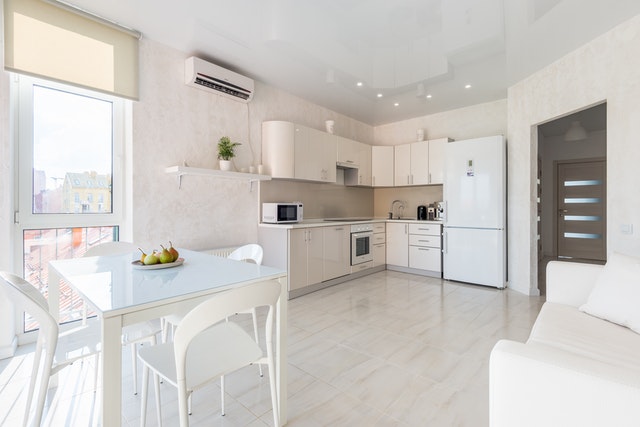
 The first thing you should do is inspect your AC unit for any damage or dirt accumulation. If you find any damage, be sure to have it repaired by a professional. If you hear some noises coming from the AC unit, it could be a sign that something is wrong and needs to be fixed.
The first thing you should do is inspect your AC unit for any damage or dirt accumulation. If you find any damage, be sure to have it repaired by a professional. If you hear some noises coming from the AC unit, it could be a sign that something is wrong and needs to be fixed. A programmable thermostat is a great way to save money on your energy bill. You can set it to automatically turn off or reduce the amount of cooling when you’re not home. This will help you save money on your energy bill and reduce your carbon footprint.
A programmable thermostat is a great way to save money on your energy bill. You can set it to automatically turn off or reduce the amount of cooling when you’re not home. This will help you save money on your energy bill and reduce your carbon footprint.
 If you have a really tough stain that you just can’t seem to get out, then it might be time to hire professionals. Some companies specialize in furniture cleaning, and they will have the right tools and products to get the job done. This is probably the most expensive option, but it’s also the most effective. Many people usually try first to take the stain out on their own, but if they can’t, they will hire a company. Professionals can easily remove any type of stain, even the most stubborn ones.
If you have a really tough stain that you just can’t seem to get out, then it might be time to hire professionals. Some companies specialize in furniture cleaning, and they will have the right tools and products to get the job done. This is probably the most expensive option, but it’s also the most effective. Many people usually try first to take the stain out on their own, but if they can’t, they will hire a company. Professionals can easily remove any type of stain, even the most stubborn ones.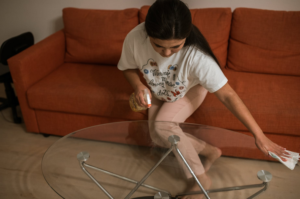 If you’re looking for a more natural way to clean your furniture, then you can try using some home remedies. For example, you can make a paste out of baking soda and water and use it to scrub the stain. You can also try using white vinegar or lemon juice. Just apply it to the stain and let it sit for a few minutes before wiping it away. There are many home remedies you can find online. In fact, this might be the best place to start your search.
If you’re looking for a more natural way to clean your furniture, then you can try using some home remedies. For example, you can make a paste out of baking soda and water and use it to scrub the stain. You can also try using white vinegar or lemon juice. Just apply it to the stain and let it sit for a few minutes before wiping it away. There are many home remedies you can find online. In fact, this might be the best place to start your search.
 A great way to get your cardio in is with a home cardio workout. But it can be tough to find the proper at-home fitness routine if you’re starting out, especially if you don’t have much experience working out or exercising outside of your home. Luckily, there are some great ways to do cardio at home that don’t require any fancy equipment or big spaces for them to be effective. The first step is finding what works best for you and your body type: whether it’s running on a treadmill with weights attached, doing burpees while holding dumbbells overhead, or using an elliptical machine for a longer workout.
A great way to get your cardio in is with a home cardio workout. But it can be tough to find the proper at-home fitness routine if you’re starting out, especially if you don’t have much experience working out or exercising outside of your home. Luckily, there are some great ways to do cardio at home that don’t require any fancy equipment or big spaces for them to be effective. The first step is finding what works best for you and your body type: whether it’s running on a treadmill with weights attached, doing burpees while holding dumbbells overhead, or using an elliptical machine for a longer workout. If you’re looking for a high-intensity cardiovascular workout that can be done
If you’re looking for a high-intensity cardiovascular workout that can be done 
 One of the most straightforward life hacks is to unplug your appliances when they are not in use. It will help conserve energy and, as a result, extend the lifespan of your device.
One of the most straightforward life hacks is to unplug your appliances when they are not in use. It will help conserve energy and, as a result, extend the lifespan of your device. Another simple life hack is to improve the airflow of your home appliances. It will help increase their efficiency and extend the lifespan of your device. If you notice that they are not working as well as they used to, it could be due to a lack of airflow.
Another simple life hack is to improve the airflow of your home appliances. It will help increase their efficiency and extend the lifespan of your device. If you notice that they are not working as well as they used to, it could be due to a lack of airflow.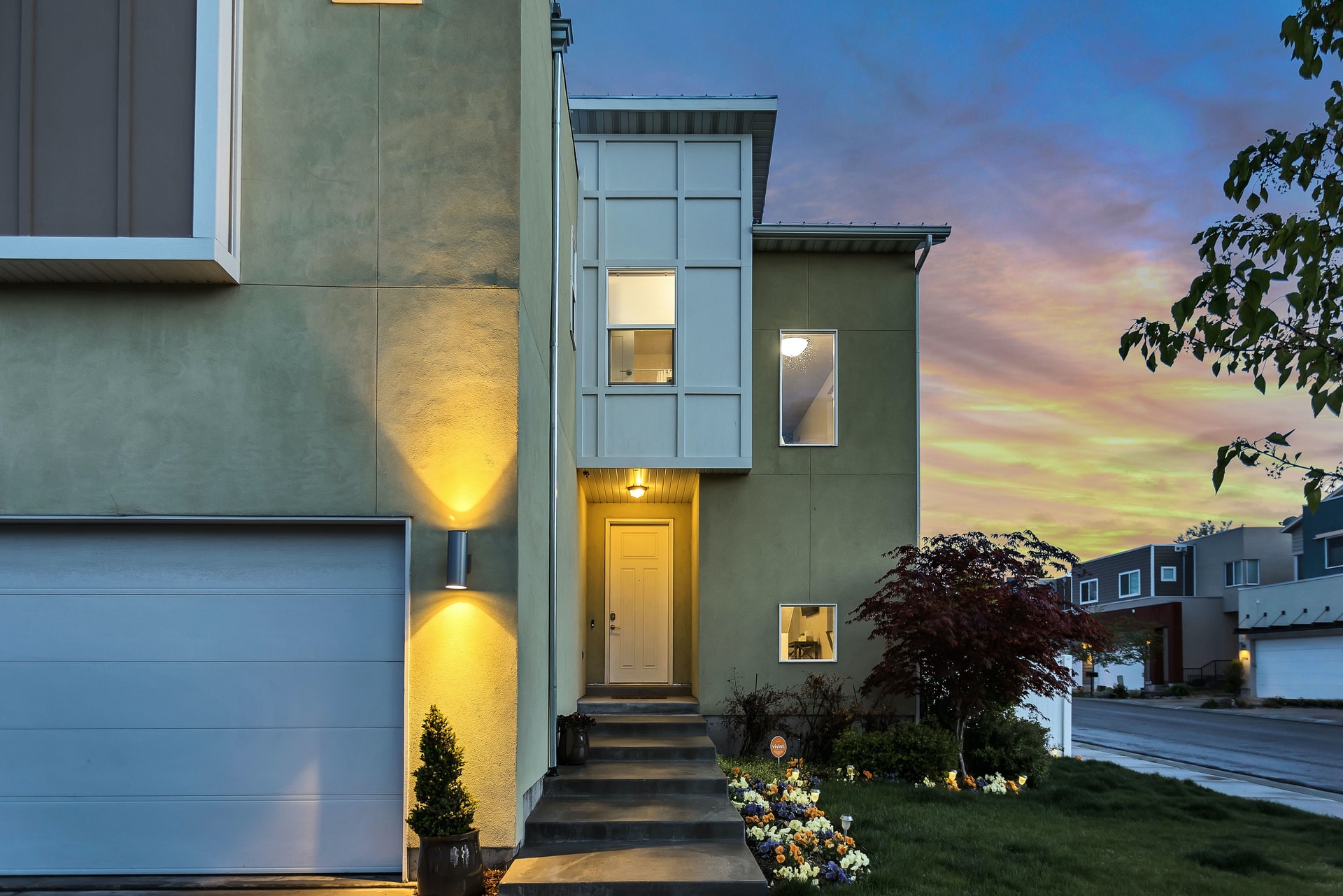
 Everyone has different and unique needs from home. That’s why you need to consider your needs before buying a new home. For example, do you need a lot of bedrooms? Do you need a big yard? Or are you okay with living in an apartment complex?
Everyone has different and unique needs from home. That’s why you need to consider your needs before buying a new home. For example, do you need a lot of bedrooms? Do you need a big yard? Or are you okay with living in an apartment complex? When you’re looking to buy a new home, it’s essential to know what the resale value of homes in your area is like. Why? Well, this will help you determine how much house you can afford.
When you’re looking to buy a new home, it’s essential to know what the resale value of homes in your area is like. Why? Well, this will help you determine how much house you can afford.
 Too much of anything is always bad, and that includes iron in your water. If levels are too high, you can experience problems like discoloration of your water, bad taste, corrosion of pipes and fixtures, and even clogging of plumbing. All of these issues can lead to expensive repairs or replacements if not corrected.
Too much of anything is always bad, and that includes iron in your water. If levels are too high, you can experience problems like discoloration of your water, bad taste, corrosion of pipes and fixtures, and even clogging of plumbing. All of these issues can lead to expensive repairs or replacements if not corrected. We can always strive for clean and pure water, but contamination is often inevitable. With the help of iron filters for home well water, you can be sure that your plumbing system will remain free from contaminants like excess iron. Well water is prone to many kinds of problems, but with the use of iron filters, you can keep your water clean and your home healthy.
We can always strive for clean and pure water, but contamination is often inevitable. With the help of iron filters for home well water, you can be sure that your plumbing system will remain free from contaminants like excess iron. Well water is prone to many kinds of problems, but with the use of iron filters, you can keep your water clean and your home healthy.
 A cordless circular saw is the next item on our list because it can help make our lives that much easier. You can use it for many things, like gardening, maybe you want to trim your hedges or prune that big tree in your front lawn that’s been causing concern during heavy winds, or you just want to chop off some wood for home projects, a cordless circular saw doesn’t need the hassle of cables and it allows you to be mobile while doing home projects!
A cordless circular saw is the next item on our list because it can help make our lives that much easier. You can use it for many things, like gardening, maybe you want to trim your hedges or prune that big tree in your front lawn that’s been causing concern during heavy winds, or you just want to chop off some wood for home projects, a cordless circular saw doesn’t need the hassle of cables and it allows you to be mobile while doing home projects!
 Roof cleaning services are an investment in your home that can save you money. Regular cleanings will help extend the life of roofing materials, preventing expensive replacement costs later on down the road.
Roof cleaning services are an investment in your home that can save you money. Regular cleanings will help extend the life of roofing materials, preventing expensive replacement costs later on down the road. A dirty roof can cause mold and mildew to grow, which is unhealthy for humans and pets alike. This buildup in the home’s ventilation system presents a problem because it can release dangerous spores into the air quality that you breathe each day.
A dirty roof can cause mold and mildew to grow, which is unhealthy for humans and pets alike. This buildup in the home’s ventilation system presents a problem because it can release dangerous spores into the air quality that you breathe each day.